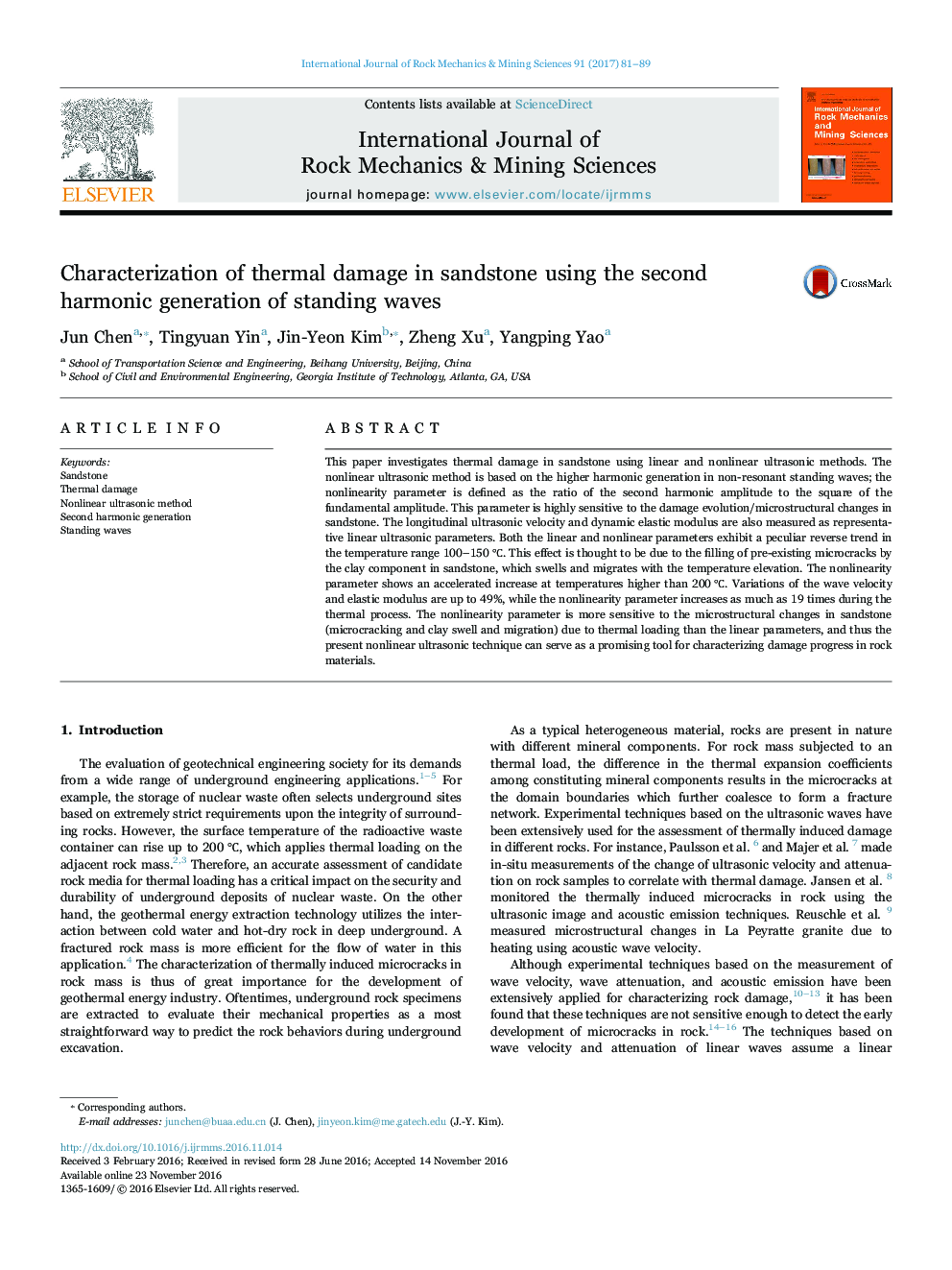| Article ID | Journal | Published Year | Pages | File Type |
|---|---|---|---|---|
| 5020324 | International Journal of Rock Mechanics and Mining Sciences | 2017 | 9 Pages |
Abstract
This paper investigates thermal damage in sandstone using linear and nonlinear ultrasonic methods. The nonlinear ultrasonic method is based on the higher harmonic generation in non-resonant standing waves; the nonlinearity parameter is defined as the ratio of the second harmonic amplitude to the square of the fundamental amplitude. This parameter is highly sensitive to the damage evolution/microstructural changes in sandstone. The longitudinal ultrasonic velocity and dynamic elastic modulus are also measured as representative linear ultrasonic parameters. Both the linear and nonlinear parameters exhibit a peculiar reverse trend in the temperature range 100-150Â â. This effect is thought to be due to the filling of pre-existing microcracks by the clay component in sandstone, which swells and migrates with the temperature elevation. The nonlinearity parameter shows an accelerated increase at temperatures higher than 200Â â. Variations of the wave velocity and elastic modulus are up to 49%, while the nonlinearity parameter increases as much as 19 times during the thermal process. The nonlinearity parameter is more sensitive to the microstructural changes in sandstone (microcracking and clay swell and migration) due to thermal loading than the linear parameters, and thus the present nonlinear ultrasonic technique can serve as a promising tool for characterizing damage progress in rock materials.
Related Topics
Physical Sciences and Engineering
Earth and Planetary Sciences
Geotechnical Engineering and Engineering Geology
Authors
Jun Chen, Tingyuan Yin, Jin-Yeon Kim, Zheng Xu, Yangping Yao,
